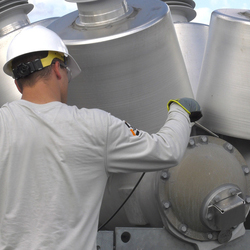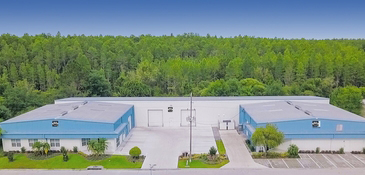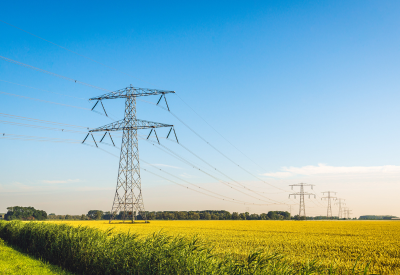In the global push toward net-zero, high-voltage infrastructure is the launchpad for decarbonisationdecarbonization at scale. With climate commitments accelerating and renewable energy surging, transmission networks must evolve faster than ever before. The grid of 2030 and beyond must handle offshore wind integration, surging electric vehicle demand, and massive loads from hydrogen electrolysers, all while becoming smarter, stronger, and more flexible.
But upgrading this infrastructure is no small feat. It means threading high-tech upgrades into legacy systems, balancing CAPEX with ROI, streamlining permitting, and unlocking investment. This article outlines a forward-looking roadmap to help asset owners, planners, engineers, investors, and policymakers understand what to build, upgrade, or digitize to support a sustainable power grid.
Net-Zero Pressure: Why Today’s High-Voltage Backbone Must Evolve
By 2030, Europe alone will need to construct over 1,000 km of new high-voltage lines every year to support its energy transition goals, according to the European Parliament. Meanwhile, the UK’s £8.9 billion high-voltage investment plan(2026–31) sets a precedent for national-scale commitment. These ambitions reflect growing awareness that future-proof high-voltage infrastructure is vital for clean energy integration, reliability, and economic competitiveness.
Understanding grid modernisation starts with distinguishing between reliability, adequacy, and flexibility. Reliability ensures the grid operates without failure; adequacy ensures supply meets demand across scenarios; and flexibility allows the system to adapt quickly to changing energy flows, especially as renewable portfolios grow. All three must converge for high-voltage transmission to meet net-zero targets.
Drivers Reshaping High-Voltage Networks
The future of high-voltage power is about managing where, when, and how electrons move. Several overlapping forces are accelerating the need for grid transformation.
Mass Renewable Infeed
We are seeing clusters of wind turbines rise offshore, solar megaprojects sprawl across deserts, and gigawatt-scale green hydrogen projects seek firm grid access. This mass infeed is variable and decentralised, challenging the traditional model of central generation and radial transmission. HVDC projects and other flexible technologies will play a key role in reshaping this dynamic.
Electrification Wave
Everything from electric vehicles to hyperscale data centers is boosting electricity demand, and not just in volume, but in volatility. Hydrogen electrolysers, for example, can be load-heavy but flexible, requiring smart coordination across the high-voltage electrical landscape.
Cross-Border Trade & Energy Security
Geopolitical disruptions and weather variability have made regional grid integration a strategic necessity. Interconnectors and multi-terminal HVDC corridors enable energy trade, grid balancing, and security of supply across national borders, which is an essential part of the clean energy transition.
Legacy-System Constraints & Engineering Pain-Points
In the U.S., over 240,000 miles of high-voltage lines are more than 40 years old. These ageing assets introduce engineering limitations, including thermal constraints, sag clearance issues, corona loss, and an increased risk of age-related failure.
Upgrading or replacing such infrastructure also confronts right-of-way (ROW) bottlenecks and rising NIMBY (Not-In-My-Backyard) opposition. These barriers demand not only technical solutions but also stakeholder strategies and regulatory reforms to clear the path.
Future-Proof Technologies: From Conductors to Controls
Grid modernization requires more than stringing new wires. Innovations like dynamic monitoring and hybrid AC/DC configurations are reshaping how power flows through high-voltage systems.
HVDC Superhighways & Interconnectors
Long-distance, high-capacity HVDC lines are central to national and continental energy strategies. A nationwide HVDC concept in the U.S. could reduce emissions, improve reliability, and lower electricity costs, according to a FAS report. HVDC also enables cross-border energy flows and stabilises AC grids by acting as electrical firewalls.
So, why are HVDC corridors critical to 2035 clean-energy targets? Because they transport massive renewable loads over long distances with minimal losses—an essential capability for countries banking on offshore wind, desert solar, or remote hydro.
FACTS Devices & Grid-Forming Inverters
Flexible AC Transmission Systems (FACTS) such as static VAR compensators and STATCOMs provide dynamic voltage control and power-flow management, especially in renewable-rich areas. These devices help stabilize weak grids by balancing reactive power, making them indispensable for regions transitioning to clean energy with high intermittency.
High-Temp Low-Sag (HTLS) Conductors & Composite Cores
Reconductor vs rebuild? When aiming for speed and cost-efficiency, reconductoring existing lines with HTLS or carbon-fiber composite cores can increase ampacity without building new towers. These materials allow for higher current with less sag and thermal loss, making them an attractive retrofit option in ROW-constrained corridors.
Dynamic Line Rating Sensors
Dynamic Line Rating (DLR) technology calculates real-time capacity based on ambient conditions like wind speed, solar radiation, and temperature. It’s been federally mandated for U.S. transmission providers to evaluate DLR under the Infrastructure Investment and Jobs Act. And yes, DLR can add 20%+ capacity to existing lines without new construction, offering immediate headroom to integrate renewables. For instance, National Grid used DLR sensors to unlock 30% more capacity on existing lines.
Superconducting Cables & Gas-Insulated Lines
Urban zones, where space is scarce and demand is dense, benefit from superconducting and gas-insulated transmission. Though still high in CAPEX, superconducting cables offer negligible resistance and compact design. By 2030, they may be cost-competitive in high-value zones like metro load centers or undersea connections.
Gas-insulated lines also reduce footprint and enhance safety, making them ideal for dense or environmentally sensitive areas.
Digital Twins, AI & Predictive Asset Management
Digital twins of high-voltage assets, powered by AI and real-time data from PMUs and IoT sensors, are helping utilities simulate stress events, predict conductor fatigue, and preempt faults.
For example, a digital twin of a 400 kV line can monitor thermal loading and environmental impacts to predict maintenance needs months in advance. Predictive failure-mode scoring is already being used on 500 kV breaker fleets to reduce unplanned outages.
These tools enable more intelligent decisions about asset lifespan, reinforcement timing, and outage scheduling, maximising ROI and safety.
Policy, Permitting & Incentive Reform
Even with technology in place, regulatory friction can stall progress. Historically, permitting a high-voltage line can take up to a decade. But reforms are showing results.
The DOE’s Transmission Facilitation Program and the EU’s PCI fast-track scheme are shortening lead times. In the UK, Ofgem’s RIIO-3 incentive model includes performance-based returns to reward timely and impactful upgrades.
Can permitting reforms shorten average lead times to less than five years? Yes—but only if paired with strategies like two-year sprint permitting, community benefit funds, and consolidated environmental reviews.
Innovative Financing & Ownership Models
With high voltage infrastructure needs surging across continents, innovative financing and ownership models are becoming essential to accelerate infrastructure buildout and modernization. Traditional rate-based utility investments alone can’t shoulder the scale or urgency of the challenge. What’s emerging instead is a more diverse landscape of capital strategies that align with energy transition goals, stakeholder expectations, and risk-return profiles.
Merchant HVDC lines backed by private equity are one such model gaining ground, particularly in projects where long-distance, point-to-point connections can generate stable revenues through long-term offtake agreements. These projects appeal to infrastructure investors seeking predictable cash flows while enabling the grid to absorb new renewable energy at scale and meet long-term energy transition goals.
Green bonds, which tie financing to measurable ESG outcomes, are also reshaping how high-voltage infrastructure is funded. Linking returns to metrics like CO₂ avoided or renewable capacity connected, green bonds help attract sustainability-focused capital and increase transparency for public stakeholders.
Public-private partnerships (PPPs) provide a hybrid path. Governments de-risk early-stage development through grants or loan guarantees, while private investors bring operational discipline and innovation. For example, the UK’s £24 billion RIIO-3 initiative uses a regulated asset base (RAB) model that spreads costs over time via consumer tariffs, with built-in performance incentives that reward timely delivery and system impact.
In the EU, cross-border interconnectors, which are essential for energy trade and resilience, often rely on blended finance structures. These combine EU grants with equity contributions from TSOs and energy investors, based on congestion pricing models and strategic grid impact. By diversifying ownership and aligning financial rewards with grid performance, these models make it feasible to future-proof transmission systems at the scale the energy transition demands.
Case Studies & Pilot Success Stories
The following aren’t just theories, but real-world projects that are proving what’s possible.
National Grid’s rollout of DLR sensors showed how wind cooling and ambient modelling could unlock 20–30% more capacity on existing assets. In the U.S., the Southwest Intertie Project North (SWIP-N) created a wildfire-resilient route that also increased grid redundancy.
Meanwhile, Europe upgraded its interconnector network from 16 GW to 30 GW capacity via HVDC retrofits, enabling flexible exchange of wind and solar power across borders. These examples demonstrate how the strategic trifecta of building, boosting, and digitising high-voltage infrastructure can unlock transformative gains across capacity, resilience, and sustainability.
Implementation Roadmap & KPIs
So how do you start? A phased roadmap can streamline the process:
- Audit ageing and constrained assets.
- Model upgrade and digitalisation scenarios using predictive analytics.
- Secure funding, be it public, private, or blended.
- Engage communities and accelerate permitting.
- Execute build/reconductor projects with real-time sensors.
- Monitor KPIs to adjust operations and investments.
Key performance indicators to track include:
- MVA-km added to the grid.
- Capacity factor uplift from improved asset utilisation.
- CO₂ avoided (t/MWh) through renewable integration.
- SAIFI (System Average Interruption Frequency Index) for reliability.
- Transfer-capacity increases, proving future-readiness.
However, beyond the numbers lies strategic readiness, which means knowing not only what to upgrade, but also when and why.
The Role of Industrial Gas Handling in High-Voltage Success
Behind the scenes, gas-insulated switchgear (GIS), breakers, and transformers rely heavily on precision gas management. As the industry shifts away from SF₆ toward greener alternatives, DILO is leading the charge with C4/CAand other insulating alternatives such as synthetic air and NOG technologies that support aligns with cleaner operations and regulatory compliance initiatives.
Utilities and EPCs also benefit fromlarge-volume gas-mixing solutions, which ensure consistency and safety during equipment installation or maintenance. Even traditionalSF₆ monitoring devices remain essential for legacy assets and transitional phases.
Proper gas management is an enabler of safe, efficient, and future-ready transmission.
Conclusion: Ready to Future-Proof?
The transition to clean energy is a massive engineering, financing, and regulatory challenge. However, with the right combination of future-proof technology, strategic planning, and collaborative governance, the transmission sector can rise to meet the challenge.
High-voltage lines must be smarter. Upgrades must be faster. And investments must be bolder. TSOs planning HVDC corridors, EPCs weighing reconductor options, and policymakers reforming permitting all face the same reality: the time to build, boost, and digitize is now.
Ready to see how next-gen gas-handling tools support grid modernization?Contact us to explore cutting-edge solutions like automated leak detection, multi-analyzers, and predictive monitoring systems tailored for high-voltage infrastructure.
Future-proofing begins with the right tools. Let’s build the grid of tomorrow – today.





